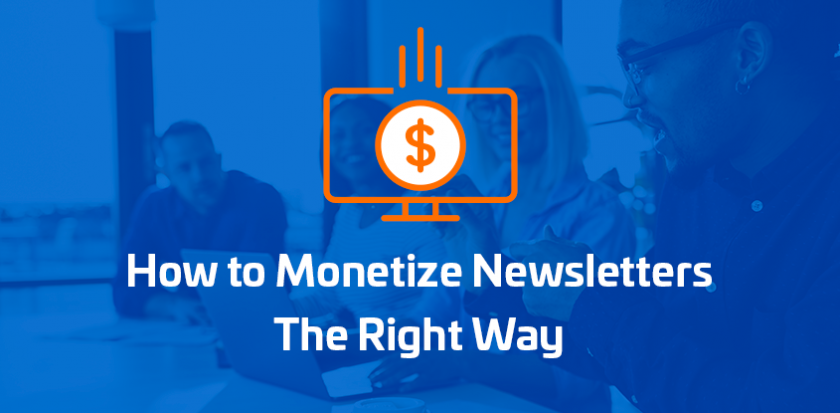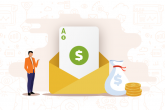Ever heard this statistic before? “Email marketing generates a 38:1 revenue ratio.”
It’s a pretty great return on investment. But it could actually be better because many people who have good-sized email lists could be doing a lot more on how to monetize their newsletters.
There are other ways to make money with your list than:
- Selling products and services
- Sharing your latest piece of content
- Keeping your audience engaged
Like this:
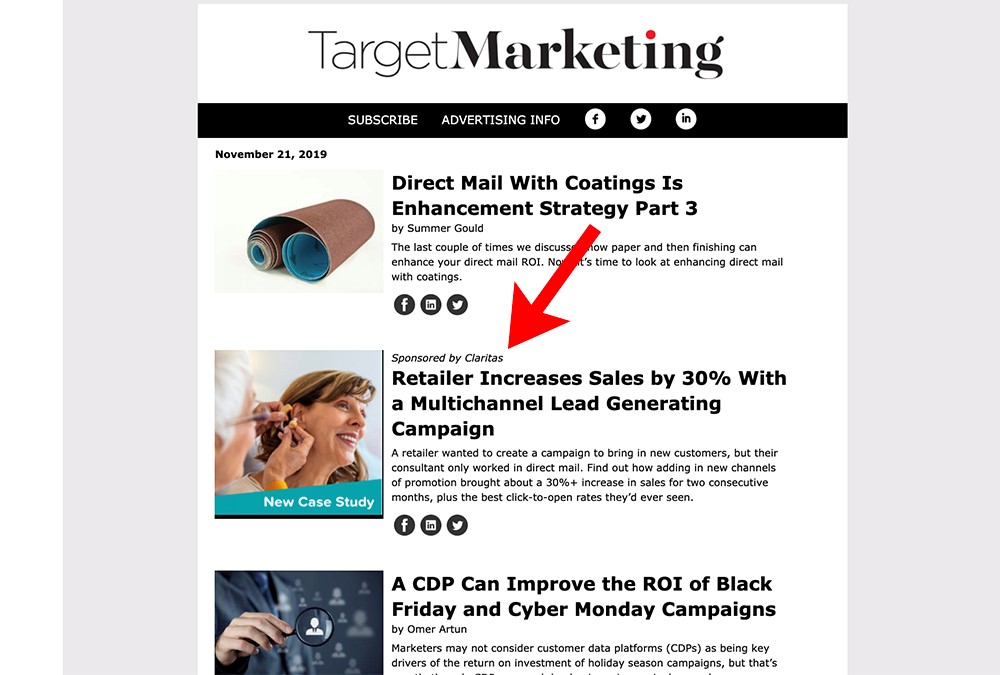
If you’ve got an email list of 5,000 subscribers or more, you can make money by selling ads. Hundreds of thousands of companies and publishers do it every week. By some estimates, more than 20% of the total income from publishers’ advertising in the United States comes from newsletters and email updates.
So, if you want to open up this revenue channel, here are seven ways to do it, and to do it successfully long-term:
1. Don’t Overload Your Newsletters with Ads.
Ads can enhance your newsletters, but only if you use them judiciously. Most successfully monetized newsletters have three display ad placements, max. These usually include one of the following:
728 x 90 leaderboard
300 x 250 ad slot
160 x 600 if your newsletter uses more than one column
728 x 90 footer leaderboard
You may also want to try text ads or much smaller ad sizes. Here’s an ad in the Nutrition Tips newsletter that almost blends into the content:
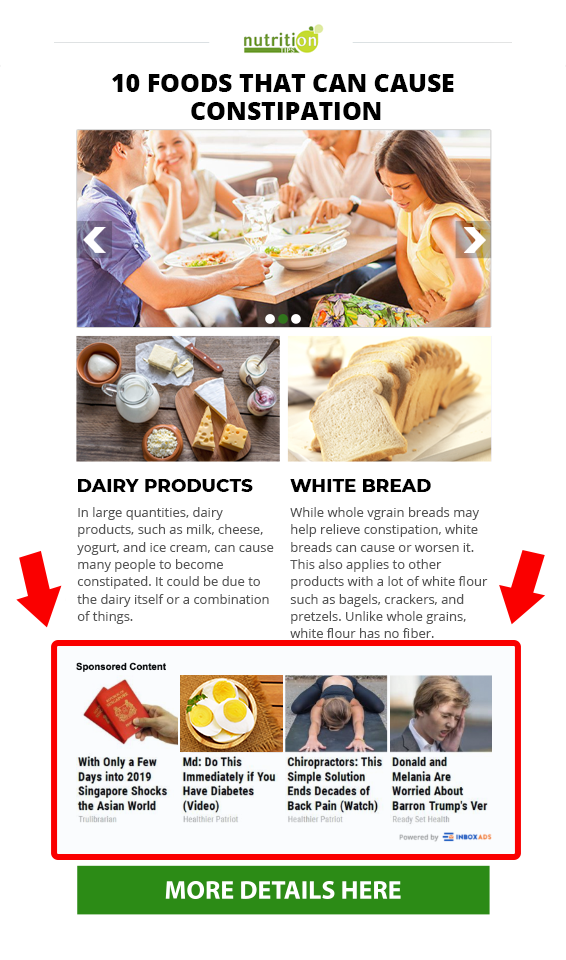
There’s only one other ad in this edition of the Marketing Profs newsletter. It also blends in well:
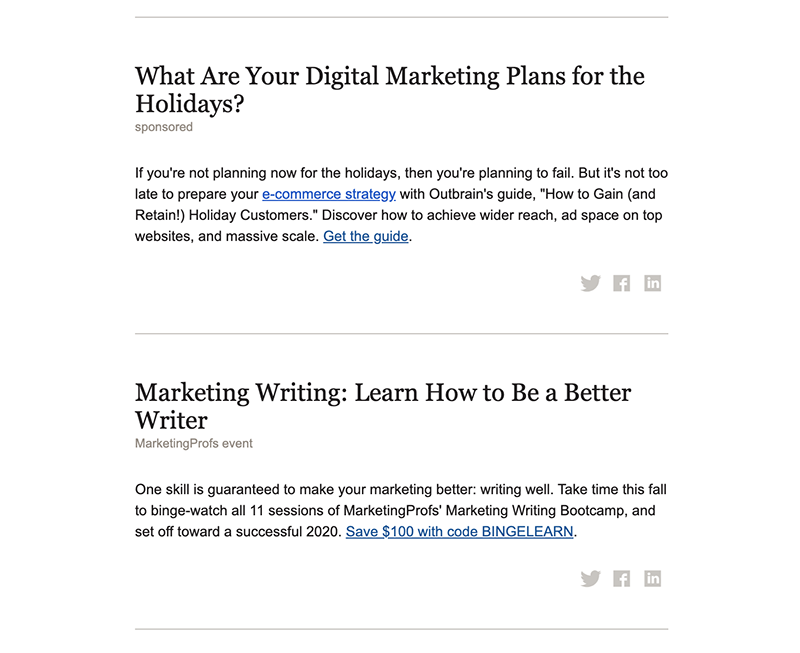
See the ad? It’s got the word “sponsored” below the title of the sponsored content. Unless someone was reading very closely, they might not even realize it’s an ad.
This sort of “native advertising” performs exceptionally well. If you’ve been using display ads in your newsletters, and you’re unhappy with the click-through rates, you might want to switch over into native ads.
A minimalistic approach to having ads in your newsletter also helps preserve the quality of the experience for your readers. Having just one or two ads from the same company keeps the sales pitch to a minimum. It also adds significant value to the advertiser, as well, because they aren’t competing for attention as much.
To be honest, you won’t make as much money initially having just one or two ads in each edition of your newsletters. But you can make almost as much money (like 60-70% or so), and you’ll be preserving the quality of experience for your readers.
Long-term, using fewer ads may end up earning you more money because your readers won’t be alienated by having to scan through lots of ads, and your advertising partners will get great results and want to advertise with you over and over again.
2. Only Accept Relevant Ads.
This sounds obvious and easy, but in practice, it can sometimes be a challenge.
Here’s why: When you start offering ads in your newsletter, if you’re managing the ad placements yourself, you may not have as many good advertisers to pick from as you’d like. So you may come up against a situation where you’d like some money for a project, an advertiser wants to give you this money, but you are worried the advertiser may not quite fit with your newsletter, or that your audience may not resonate with what they’re offering.
So what do you do? Preserve the quality of your newsletter. You want to deliver the best newsletter to your subscribers that you can. That may mean you have to decline some advertisers… and that could mean there are empty slots where ads could be in your newsletter.
This is often one of the best benefits of working with a newsletter advertising platform or service. They’ll give you access to a much larger pool of advertisers than you might find on your own. But regardless of whether you manage your newsletter ads with a service or on your own, try to think about the long-term value of your newsletter.
Simply filling up your newsletter with irrelevant ads can turn off readers. It will also give your advertisers poor returns, which means they won’t want to pay as much if they decide to advertise with you again… if they decide to advertise with you again.
3. Decide Whether You’ll Allow Solo Ads, Also Known as Sponsored Emails or Dedicated Emails.
These are emails where the “ad” is the entire newsletter. You’re basically letting another company or organization send their email to your list.
Here’s a dedicated ad that Adweek sent on behalf of the Webby Awards:
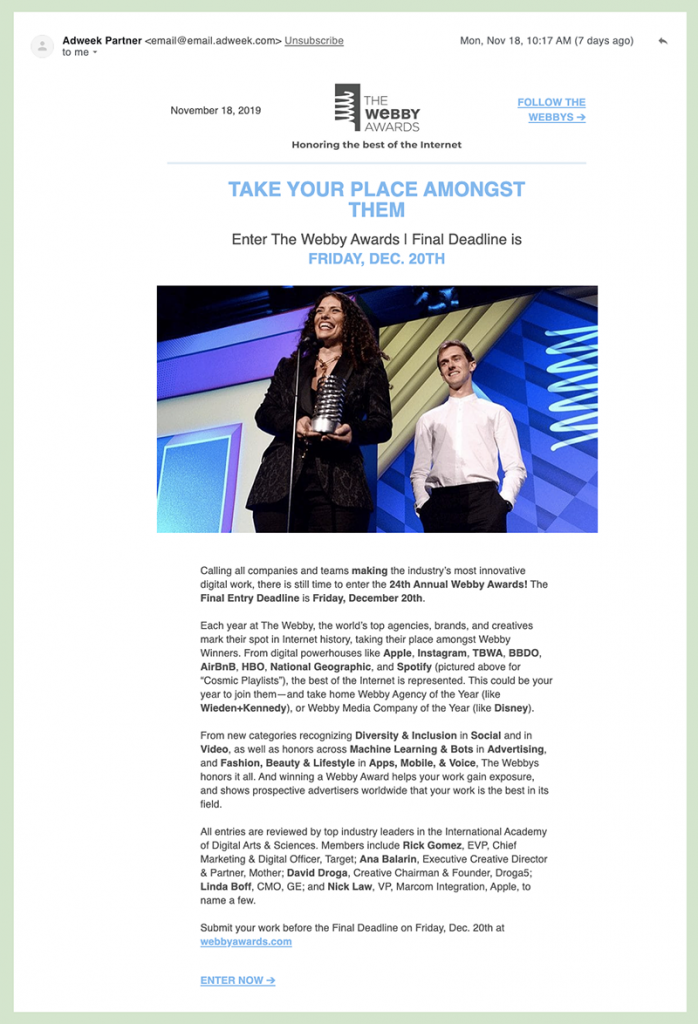
Clearly, this is something you’re going to want to control carefully. You don’t want just any advertiser mailing your list, and you don’t want just anyone emailing your list too often.
So who might be an appropriate advertiser for this? Someone whose business complements yours, but doesn’t compete. Someone who’s offering something you’ve tried yourself, liked, and believe your audience will like. Someone who will treat your subscribers well should they become this person’s customers.
As for how often to offer a dedicated email? It depends on what you’re comfortable with, but any more than once a month may start to irritate your subscribers. Once a quarter may be a better idea.
4. Charge a Percentage of Sales Rather than a Flat Advertising Fee.
Instead of simply charging, say, $1,000 for someone to send a dedicated email to your list, you can not charge them an advertising fee at all. Instead of the fee, you charge them a percentage of whatever they sell through your list.
Some list owners send these types of promotions to their list almost every day. Usually, they’ll write an introduction to the email promotion, or sometimes they’ll write the entire email “ad.”
If the list owner writes the email for the advertiser, it does help to make the dedicated email a little more valuable to the subscribers. The audience wants to hear from this person, and they want to know what they think, after all. And if the list owner writes a good enough email, they may be able to both sell, educate and entertain all at once with their email copy.
Often, the list owners who offer these sorts of percentage-based advertising deals will do a swap with the person whose product they’re pitching.
Here’s how it might work. Say Mark’s Fly Fishing Blog publishes a newsletter about fly fishing. Mark has a “Learn How to Fly Fish” course that he wants to promote via a dedicated email to Susan’s Wilderness Enthusiasts email list. So Susan writes a little intro about Mark’s fly fishing course and sends it to her list. Mark sells $5,000 worth of courses according to the tracking he and Susan have set up. Mark pays Susan $2,500 – 50% of his sales – for the privilege of mailing to her list.
Susan, then, gets to promote her course about Geocaching to Mark’s list. Mark writes a little intro about Susan’s course, then sends Susan’s promo email out to his list. Susan gets $8,000 worth of sales from Mark’s email list, and so she pays him $4,000 – 50% of what she earned by mailing to his list.
5. Include Affiliate Links.
Any email newsletter or publisher that talks about how to do things will eventually make a product recommendation. So why not make a little money off of those product recommendations?
That’s what affiliate programs allow you to do. You sign up for the affiliate program of a retailer you like, you get approved (because you’ve got a nice, big, highly-engaged email marketing list) and you get an affiliate code. Then you embed that code in any link you include in your newsletters. If anyone clicks on one of your affiliate links, then makes a purchase, you get a portion of that sale… anywhere from 3% to 50% of it.
Joining a few well-chosen affiliate programs could turn an email like this from simply an editorial exercise about hiking enthusiasm into a revenue-driving email that pays enough to cover your website hosting fees for a month or more.
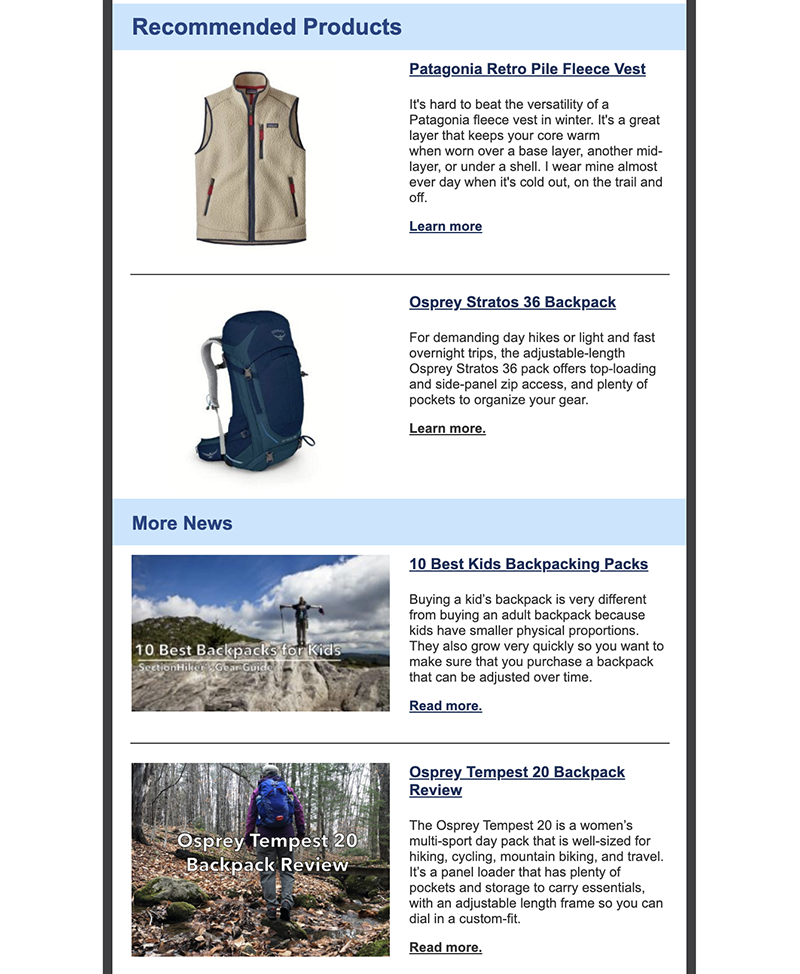
6. Ask for Donations.
Services like Buy Me a Coffee, Ko-fi, Patreon, Donorbox, Intertimes, and even PayPal let you set up a digital tip jar to earn some coin from your work. You probably won’t earn as much from these services as you would from selling ads, but it is a way to monetize your newsletter.
Maria Popova’s widely-read and award-winning curated newsletter, Brain Pickings, is supported by donations from readers. Popova appears to have developed her own donations tool for her site, but you could certainly use one of the services mentioned above.
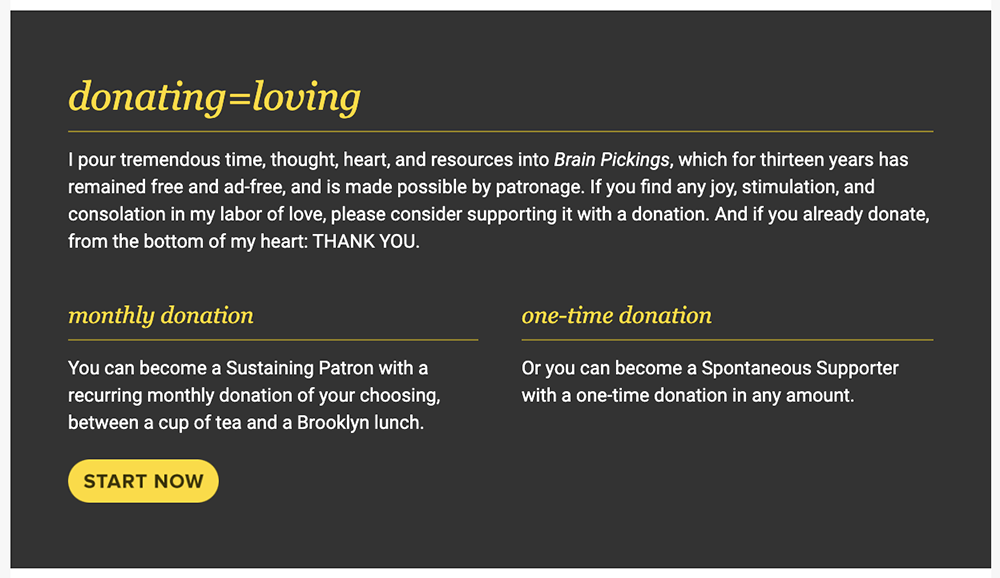
7. Manage Your Own Classifieds.
Here’s an interesting way to sell ads, and sell more ads, without spoiling the experience for your readers: Use classifieds.
Ann Friedman’s curated newsletter has been selling classified ads for years, at $95 per slot. Like Popova, she’s developed what looks like a custom shopping cart for her ad sales. She sells classified ads by the inch, just like an old-school newspaper. And it probably earns her $500-700 per week. The ads enhance to the reading experience, too – many people like reading classified ads, and she tends to promote things in her classifieds section that her readers love.
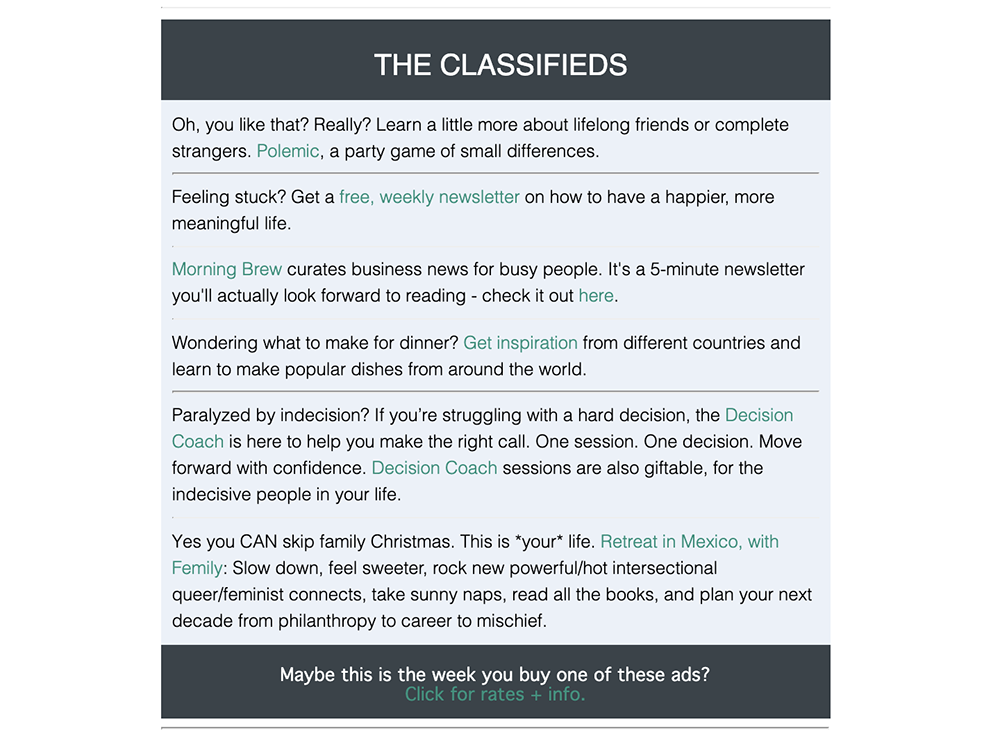
Of course, if you don’t want to set up a custom shopping cart, and you don’t want to find and vet advertisers (and chase them down to pay you), using an email advertising platform like inboxAds might be a much easier way to go. Email advertising services can often get you a better price for your ad space than you could ever get on your own. They can also find you more relevant, high-value advertisers, and they can manage all the payment issues.
Instead of spending hours managing the ads for your newsletter, you just sign up for an account, embed some code into your newsletter’s template or install a WordPress plugin on your site, and get paid every month or so. It’s a seamless way to monetize your newsletter (up to 35% more money) and to stabilize your cash flow. It can even make your emails more valuable to your readers.
Find the balance between driving revenue for you and delivering a good experience for your readers
However, many list owners have shied away from monetizing their newsletters because they didn’t want to “cheapen” them or alienate their readers by being too sales-driven.
But ads don’t have to take away from your subscribers’ experience with your emails. Relevant, complementary ads that don’t overload your newsletter can add value for your readers. If you advertise with the right partners, your newsletter readers may actually want to see which products, services, or events you’re recommending. And it’s okay for you to get paid for all this. Especially if you can outsource the management and payment of the ads.
After all, the more money you make, the better an email newsletter you can craft for your audience. This is one of those rare, excellent situations where everybody can win: you get more money, your subscribers get recommendations for great stuff, and your advertisers find a new audience.



